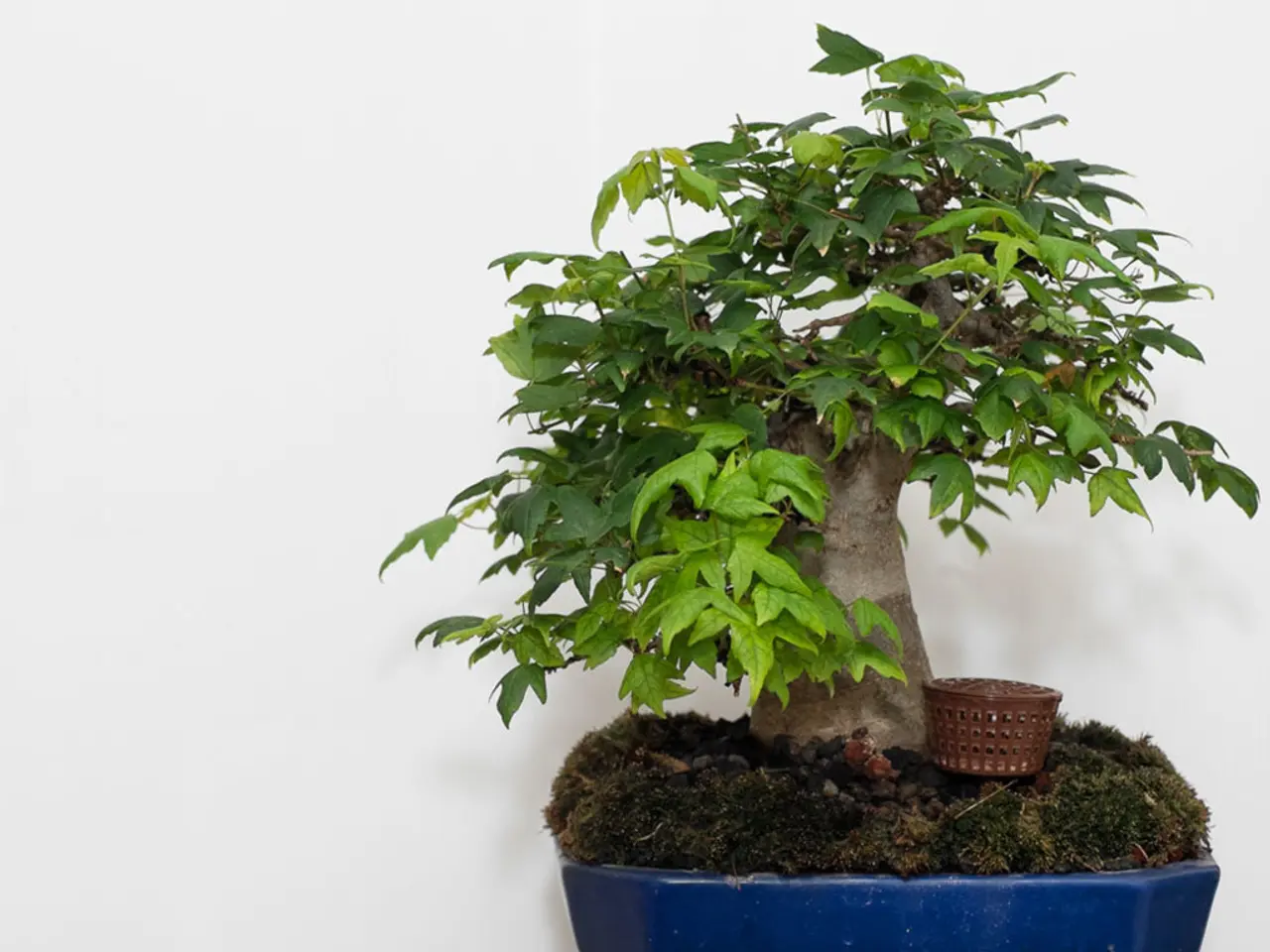Tips for Nurturing a Household Bonsai Gardenia: Special Guidance on Hydration, Trimming, and Upkeep
=================================================================
Maintaining a Gardenia Bonsai can be a rewarding experience, as these miniature masterpieces bloom beautifully and add a touch of elegance to any space. Here's a step-by-step guide to help you care for your Gardenia Bonsai and keep it healthy and attractive.
Watering Your Gardenia Bonsai
Water your Gardenia Bonsai deeply when the top inch of soil feels dry. Avoid waterlogging, as this can lead to root rot. During cooler months, you should reduce watering slightly. The soil should remain consistently moist but not soggy to promote healthy growth.
Lighting Requirements
Place your Gardenia Bonsai in a spot that receives bright, indirect sunlight. Harsh direct sun can cause leaf burn, so it's best to avoid this. A south-facing window is usually an ideal location.
Temperature and Humidity
Keep your Gardenia Bonsai in a consistent, comfortable temperature range between 65°F (18°C) and 75°F (24°C) during the day, and slightly cooler at night. Sudden temperature changes should be avoided, as they can stress the plant. Maintain high humidity, as this is essential for healthy foliage and bloom production. You can use a humidifier or mist the leaves as needed.
Fertilizing Your Gardenia Bonsai
Fertilize your Gardenia Bonsai every time you water it, using an acidic fertilizer with an NPK ratio of 3-3-3. This ensures your bonsai gets a consistent and steady supply of essential nutrients. During the growing season, fertilize every 4-6 weeks.
Pruning and Shaping
After flowering, prune your Gardenia Bonsai by removing faded flowers, yellow leaves, and pinching new growth to promote bushier branching and bud formation for next year's flowers. You can also use wiring during late spring to early summer to shape branches carefully with appropriately sized wire.
Repotting Your Gardenia Bonsai
Repot your Gardenia Bonsai every two years in early spring or as needed if it becomes root-bound. Use acidic, well-draining soil for optimal growth.
Pest and Disease Management
Monitor your Gardenia Bonsai for common issues such as yellow leaves (often due to overwatering or nutrient deficiencies), aphids, spider mites, or fungal leaf spot disease. Take prompt action to treat these issues and maintain the health of your bonsai.
Investing in Quality Tools and Soil Mixes
To ensure optimal growth for your Gardenia Bonsai, it's recommended to invest in quality bonsai tools and soil mixes. A liquid Bonsai Plant Food is a good choice for regular fertilization during the growing season, as it ensures your bonsai gets the right nutrients at the right time, promoting optimal growth.
By following these simple steps, you can enjoy a healthy and thriving Gardenia Bonsai that will bring joy to your home for years to come. Happy gardening!
- Incorporating the right tools for pruning and shaping, such as quality bonsai shears, is essential for maintaining the shape and health of a Gardenia Bonsai.
- A home-and-garden lifestyle that includes cultivating a Gardenia Bonsai can enhance the aesthetic appeal of any indoor space, providing a touch of nature and elegance.
- To encourage healthy growth and blooming, it's important to use an acidic soil mix designed specifically for bonsai, along with the appropriate fertilizers and nutrients, as recommended in this guide.




